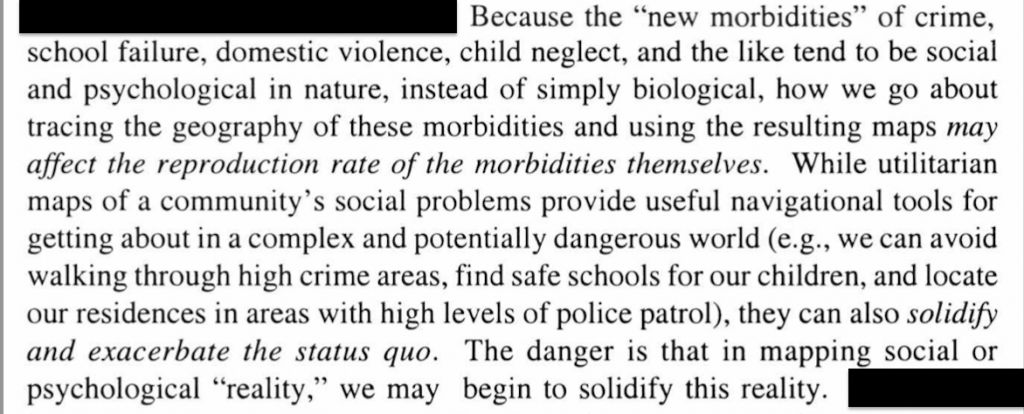This summer I have been exploring North Tulsa, and collecting & mapping data on local resources within the community to produce a data visualization of the resource landscape and extent of spatial inequalities. While exploring the various ways different maps define the borders of “North Tulsa” for my project, I came across a video titled “I Drove Through the WORST Hoods in Tulsa, Oklahoma. It’s Infamous.” Despite having no visual evidence of the “danger” in the neighborhood, the video uses local data on crime, public housing units, homelessness, and poverty as indicators to confirm the narrator’s social narrative about the community, ultimately painting a bleak picture of North Tulsa. As I explored these sentiments deeper, I uncovered many threads on Reddit, Quora, and other platforms, all questioning the same thing: Is North Tulsa “dangerous”? Is it really “unsafe”?
These videos and discussions portray stark stereotypes and associations that many Tulsans are socialized into holding about North Tulsa. These perceptions not only generalize and criminalize the space and communities living there, it also further perpetuates a divisive cycle of disinvestment and avoidance of an already neglected and isolated community. In many ways, ironically, the negative perception of North Tulsa discourages the very investment needed to address the social problems impacting people’s lives and that are highlighted in these narratives. These moments of confrontation made me reflect on my own role in shaping the perception of North Tulsa through my research. What narrative would I be promoting by mapping the resource landscape? And how would it influence the current cultural and social views of the neighborhood?

In my literature review, I have found that community mapping is a form of story-telling, “[possessing] varying levels of truth” rather than being solid fact (O’Looney, 1998). With this understanding, comes the responsibility to consider what kind of story is being told, especially when maps are naturally used as authoritative guides for everyday people. While my intention is to use the map to highlight areas in need of more resources, it also could inadvertently put forth a deficit narrative. It could be misinterpreted or misused, for instance, by private sector companies to justify not investing in North Tulsa, which would be counterproductive to my project’s aim.
To counter this, combining resource mapping with asset mapping, a tool used to identify and map the resources, institutions, or organizations that serve as central pillars in alleviating community issues, is what research suggests is important in truly addressing the concern. By incorporating this tool into my project, I hope to combat the traditional narratives that arise out of resource mapping, recognizing community assets as resources in themselves, and contribute beneficially to North Tulsa. I have come to view these blogs as reflections, capturing significant moments in my research where I encounter critical questions or considerations that reshape the design and direction of my work. This consideration in particular has been central in the research I have done so far and will continue to frame how I do research going forward.

